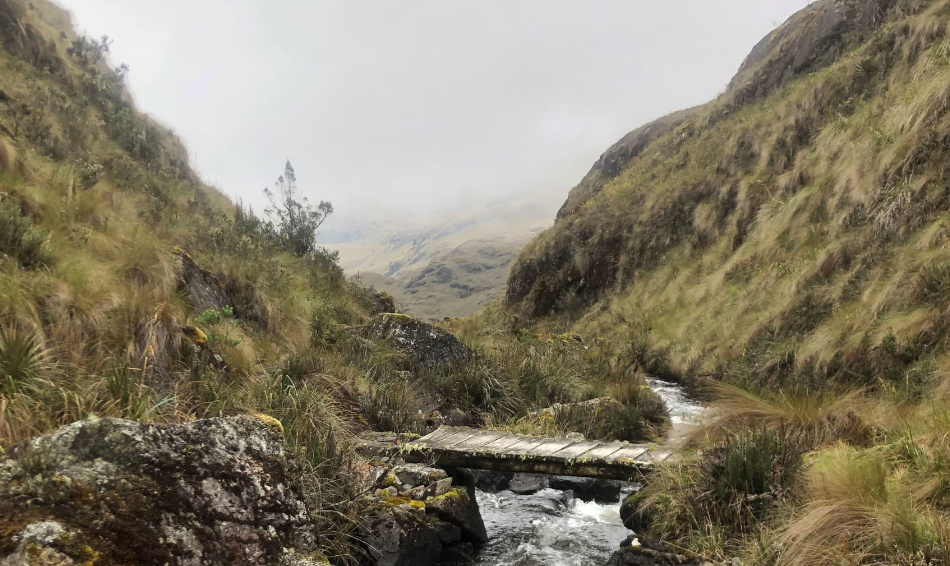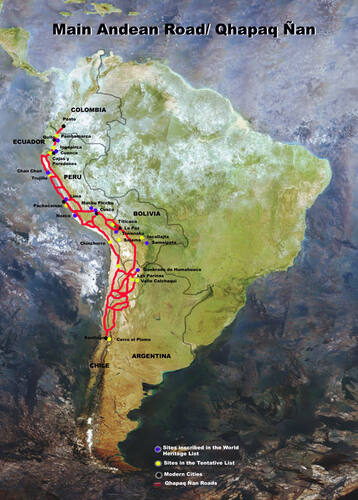Latin America
Related: About this forumHiking Ecuador's Inca Trail on three weekends
Aug 16, 2023

By Sinead Mulhern
On a rainy day, I find out about the kind of middle-of-nowhere adventure that I live for. Three parts of Ecuador’s Inca Trail happening on three separate weekends. One involves camping in the wild, another features a waterfall. My heart skips a beat.
Already I know this landscape: the shark-tooth rows of Andean ridge line, the revitalizing mountain air, llamas chilling in open spaces. Here at 11,500, feet along the world’s longest mountain range, adventures are unpredictable. Anything from hot sunshine, to pouring rain, to chunks of hail pelting from the sky are par for the course. Add the reconnection with a past civilization—the Incas—who ruled here during the 15th and 16th centuries, and this sounds like a great adventure. I’m in.
This will be no ordinary Inca Trail trek. We’ve all heard of the infamous routes that retrace steps of ancient civilizations in South America: Peru’s route to Machu Picchu and Colombia’s Lost City being two such examples. There, hordes of tourists lace up their boots and hit the trail. Here in Ecuador though, we’ll see a quieter side of the Inca Trail along sections of nearly forgotten Incan territory. Sure, these trails won’t have grandiose ancient ruins, but they will have miles of untouched spaces where the only things to interrupt your thoughts are whispering Andean breezes. This is the Inca Trail that most will never see. And since so many favor Colombia or Peru over Ecuador, these segments don’t even bother to compete for international attention. They’re just as they are: rugged, wild, and unedited.
With an adventurous heart, I set out.
Oña, March 12
The water is so cold it feels like tiny needles pricking the surface of my skin. Right now I’m reminded that the Andes are a place of extremes — extreme inclines, bone-chilling winds, and water that runs unforgivingly cold. But to be someone who loves the outdoors means I either embrace what Ecuador’s mountains throw at me, or short myself of an experience. So I swim. The river runs white as it collides against the rocks at its bottom.
This is Oña — a scenic place in the south of Ecuador. The Incas once walked along this very spot and, today, we’re retracing their steps. The grand finale is a waterfall that we’ll hit by lunch.

A waterfall near Oña.
More:
https://cuencahighlife.com/hiking-ecuadors-inca-trail-on-three-weekends/
~ ~ ~
Main Andean Road - Qhapaq Ñan

Argentina, Bolivia, Chile, Colombia, Ecuador and Peru share a common cultural heritage of outstanding value: the Qhapaq Ñan, or Main Andean Road.
For the past three years the World Heritage Centre has been assisting these countries in a pioneering project: the preparation of a single nomination for the inclusion of Qhapaq Ñan in the World Heritage List entailing an original and innovative regional cooperation process.
Description
Qhapaq Ñan otherwise know as the Main Andean Road, was the backbone of the Inca Empire’s political and economic power. The whole network of roads over 23,000 km in length connected various production, administrative and ceremonial centres constructed over more than 2,000 years of pre-Inca Andean culture
The Main axis of the route, also known as the Royal Road runs along the peaks of the Andes which is at it's most discernable between Quito and Mendoza. In addition to this backbone over the highest peaks, other roads also run in a north-south direction along the Pacific coast. The Inca Empire organized its network on a continent-wide scale; its roads are an invaluable expression of the organizing and planning spirit of the available labour force and constituted a key instrument in unifying the Empire physically and organizationally.
This route is a demonstration of universal value on a grand scale. Experts' meetings have been held to identify the cultural significance and unitary value of the entire network with a view to considering options for its inclusion on the World Heritage list through various forms of technical cooperation.
More:
https://whc.unesco.org/en/qhapaqnan/